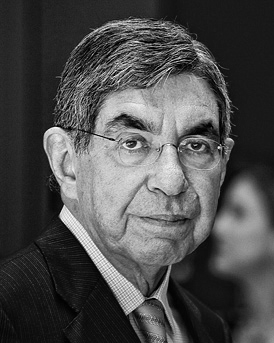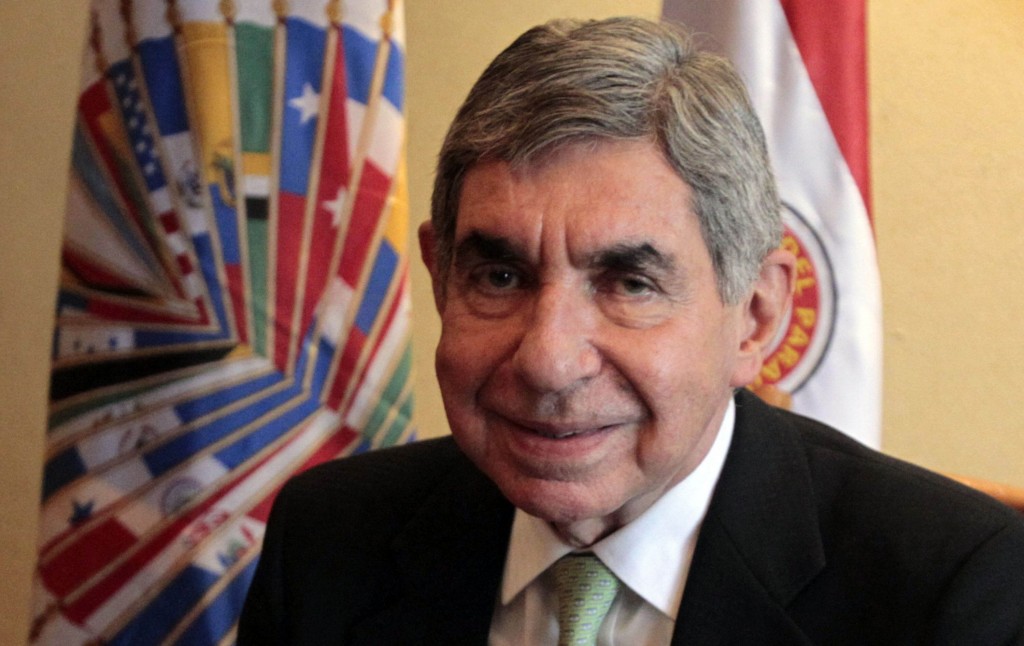Editorial – A couple of weeks ago, I thought of Tony, a burly, cheerful, Costa Rican who drove a friend and me in his Toyota south along the highway from the Tortuguero National Park to the border with Panama. In fluent if ungrammatical English he told us he was taking us somewhere that would tell us more about his country, one of the longest-running democracies in Central America.
 I was thinking of Tony one evening in a large hall in Mumbai as I listened to a lecture by a man who was also in Costa Rica when I visited — Oscar Arias, then the country’s president and a Nobel Peace Prize laureate.
I was thinking of Tony one evening in a large hall in Mumbai as I listened to a lecture by a man who was also in Costa Rica when I visited — Oscar Arias, then the country’s president and a Nobel Peace Prize laureate.
On the last day of his visit to India, this admired world figure spoke about his country, and mine, to an audience of only 25 people, which was a pity because his ideas for world peace might have resonated with Indians during this election season.
“My vessel is a humble one,” Mr. Arias began, “but one of which I am proud. I have been sent to this vast and mighty nation by a small country of coffee fields and volcanoes and tropical forests. I have come to this largest democracy in the world from the oldest continuous democracy in Central America.”
From there, Mr. Arias expanded on a theme he called the “Century of Reason,” a vision of hope for the 21st century. The way he painted it, we are at one of history’s turning points: In this still young century, he believes, “humanity will abandon the beliefs that have promoted violence and increased poverty around the world.”
He meant war, and its constant demand for arms. Weapons, he said, “have consumed too many resources, taken too many lives.”
We have nuclear weapons in the tens of thousands, but the only people who like to count them are “fundamentalists and megalomaniacs who sustain their power because of gunpowder,” Mr. Arias said, in his strongest language of the evening.
Ridding humanity of this scourge of weapons would, almost by definition, bring peace. In that quest, Mr. Arias said, the world is looking to Asia and particularly toward India.
There is an implicit moral force behind Mr. Arias’s logic. “In 1948,” he said, “mine was the first country in the world to voluntarily abolish its army.” That decision came after a bloody civil war, the worst in Costa Rica’s history, left 2,000 Ticos, or Costa Ricans, dead. It set Mr. Arias, years later, on his quest to persuade the world to give up its obsession with arms — for his country knows better than anyone the benefits of doing so.
In a region characterized by years of internecine warfare and slaughter, it’s astonishing that Costa Rica has held to its army-less course for six decades and counting. The dividends have been as astonishing. It has allowed Costa Rica to focus instead on education, health care, strengthening democracy — in short, on its people. Mr. Arias has every reason to be proud of that humble vessel.
All of which brought quarter-century-old memories of Tony flooding into my mind. Tony might have been just another tourist taxi driver. But like Mr. Arias, he was a proud man and he took care to show me why. On a lush tract of land on the Panama border — trees everywhere, fields overflowing with crops — Tony stopped his Toyota. “Home of Bribri people!” he declared.
The Bribri people are indigenous to Costa Rica, most of them found in three reserves the country has set aside for them. The one Tony took us to was in the Talamanca County, not far from Tortuguero. The Bribris are by no means wealthy, but they are by most accounts self-sufficient, raising crops for their own consumption and sale, holding on to their own culture even as they settle into a modern economy as best they can.
Tony explained some of this, and then pointed dramatically around us. “See how many trees? Very fertile land here, best crop land in country, government gave it to these people. O.K., now you compare to Navajo or Cherokee reservation in U.S.A.”
There was no comparison to this lush home of the Bribris. We might have compared the Bribris, as well, to India’s treatment of our “Adivasis,” our indigenous people. Displaced in disproportionate numbers by India’s development, plenty of them live in sordid urban slums. Plenty more are “resettled” in villages notable only for soullessness, apart from often lacking electricity and water supplies.
If the world’s two largest and arguably loudest democracies treat their least-privileged people this way, how did tiny Costa Rica choose another path?
The best answer might be that Costa Rica gave up its army. Tony said that allowed the country the vision to treat its poorest citizens, like the Bribris, with a certain dignity. And this is what filled him with pride, so much so that he wanted us to see the Talamanca Bribri reservation for ourselves.
In Indian circles that obsess about a curious beast called “realpolitik,” that presume they know more than everyone else about nations and their ties, there’s plenty of harrumphing scorn you’ll find for Costa Rica. I’ve mentioned Costa Rica to some Indian friends who have said, “Sure, but Costa Rica doesn’t have a violent neighbor like we do.”
True — because actually, it has several. Mr. Arias’s work on the Esquipulas Accords eventually ended years of armed conflict in El Salvador, Guatemala, Nicaragua, Honduras and Panama. For that, he was awarded the Nobel Peace Prize in 1987. Not just Tony, but several other Ticos explained that this too was the legacy of 1948: Only a country that had seen a generation of progress could credibly tell neighbors about the dividends of lasting peace.
“I am not the only one,” said Mr. Arias that evening in Mumbai, “who wants international law to reflect the best of humanity.”
Tony was again in my thoughts: “In countries like Panama,” he said, pointing across the Sixaola River that forms the border, “people solve problems with this finger” — here he crooked his index finger as if pulling a trigger.
“In Costa Rica, we use different finger,” he said, holding up his thumb. “We vote.”
Dilip D’Souza is a writer based in Mumbai. He has written four books, most recently “The Curious Case of Binayak Sen.” Find him on Twitter @DeathEndsFun.
By DILIP D’SOUZA , india.blogs.nytimes.com

